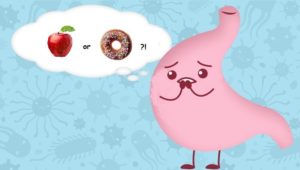
The condition of feeling full after eating (or satiation) conforms to a law as real as Newtons’ Laws of Motion, according to Drs. Doug Lisle and Alan Goldhamer in their book The Pleasure Trap. They call it the Law of Satiation.
[su_box title=”THE LAW OF SATIATION” style=”glass” box_color=”#ede8f8″ title_color=”#07114e”]”In a natural setting of caloric abundance, animals will consume the correct amount of food needed for optimal function.”[/su_box]
They explain that in the natural, animal world, there is a balance between caloric intake and activity level; wild animals simply do not become overweight.

Today in the western world, however, foods are overly processed and packed with extraordinarily high calorie content – very different from how nature intended.
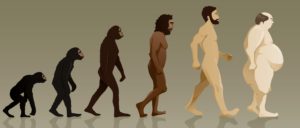
It is very sad to see millions of people busily counting calories while all along there’s a beautifully evolved innate machinery inside our bodies that can handle this automatically for us.
So, contrary to almost everything you hear in the popular media, the answer lies not in how much we eat, but in what we eat.
The three mechanisms of satiation
- Stretch sensation
- Nutrient sensation
- The “Yowel” circuits
The gastrointestinal system automatically assists us in helping us to feel just how much we have consumed. It does this with stretch receptors and nutrient receptors. The former sends signals to the brain to indicate the stomach volume is full, while the latter senses the caloric density of what we’ve consumed.
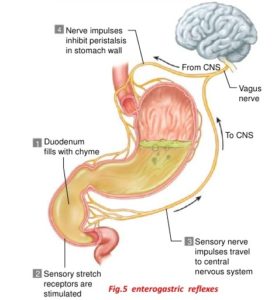
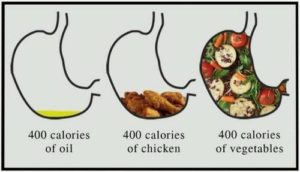
The Yowel circuits
The “Yowel” circuits can be explained by the acronym You’re Over-Weight, Eat Less! This isn’t a scientific term but simply another mechanism related to feeding behaviour – a psychological feedback mechanism that allows us to monitor our weight and food consumption, reflect on it and, hopefully, make appropriate behavioural adjustments – i.e. eating less if we are noticing that we’re getting a bit podgy.
The question is: if there’s this so-called “Yowel” circuit then why is anyone overweight?
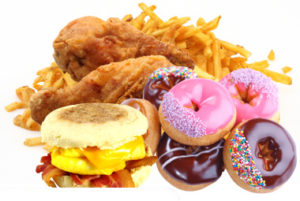
“The excess fat reduction mechanisms were never intended to do battle with the degree of dietary indulgence caused by modern processed foods. We are no longer dealing with mildly elevated caloric intakes, but rather with a problem of massively excessive calories and excess body fat.” (The Pleasure Trap, p. 72).
When our ancestors over-indulged during the rare occasions when they would come across a plentiful natural food supply, the “Yowel” circuits would soon discourage overeating. Becoming aware of physiological changes as a result of indulgence in extra calories would cause a natural return to appropriate levels of consumption. Clearly, evolution would have favoured the thin and mobile, rather than the obese caveman or woman when the group had to escape from predators. And in any event, the period of excessive consumption would rarely have lasted for long in a natural pre-industrial environment.
The conscious regulation of food intake is simply not necessary when eating a diet consisting of whole natural foods – satiety is controlled unconsciously by our inherent natural mechanisms.
The trick, therefore, within the toxic dietary environment in which we now find ourselves, is to eat foods designed by nature – which naturally balances caloric intake with caloric expenditure – for a lifetime.
Artificial concentration of foods
So what happened? Why are so many of us burdened with being overweight?
The artificial concentration of calories fools the Yowel mechanism with too much fat and refined carbohydrates, which comes from:
- high-fat animal products,
- oils,
- sugar,
- other refined carbohydrates,
- as well as plant foods with damaged fibre.
It works like this: the stomach does not become as full with highly processed, fatty animal foods as it does when eating a balanced, high fibre plant diet. So the brain is not informed by the stomach’s stretch receptors that sufficient bulk (calorie-load) has been consumed. Also, the artificial nature of the highly concentrated and processed food fragments that comprise much of the modern diet do not register clearly enough with the biochemical sensors in order to trigger a sense of satiation.
Satiation Confusion
Without a sensation of satiation, we continue eating – day after day, year after year in the same way. When, in time, we notice that we are putting on excess weight, and maybe feeling increasingly ill after heavy consumption, we become confused. Our eyes are telling us one thing – You’re Over-Weight, Eat Less! but our stomach keeps telling us another You’re Still Hungry! Thus, the body has become chronically fooled by the abnormal modern diet.
The fear that results from seeing ourselves becoming increasingly obese has surely played a part in the flood of expensive and quite useless diet-related products – low-fat, low-carb, low-sugar, gluten-free, etc, as we try to wrestle back control of our diets.
And from all the evidence, veganism and vegetarianism are incapable of offering a reliable solution, either, if they are merely replacing processed animal foods with processed plant foods, full of sugar, salt and oil.
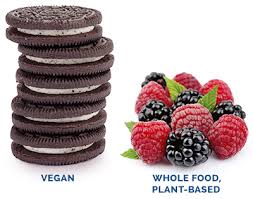
If you have any lingering doubts that this whole process depends on whether you are eating a WFPB or SAD (Standard American Diet) diet, just ask yourself which of the following similarly calorific choices is most likely to satisfy your hunger?
- A medium-sized chocolate chip muffin,
- 4 apples,
- 15 carrots,
- 1250 grams of raw salad,
- 4 corn on the cob,
- 4 sweet potatoes,
- 600 grams of ripe cherries.

[qsm quiz=7]
References:
Lisle, DJ, Goldhamer DC. The Pleasure Trap: Mastering the Hidden Force that Undermines Health & Happiness. Summertown, TN: Book Publishing Company. 2006.
Satiation and Satiety—“Stop” Signals – (http://aibolita.com/dietetics/28780-satiation-and-satiety-stop-signals.html)